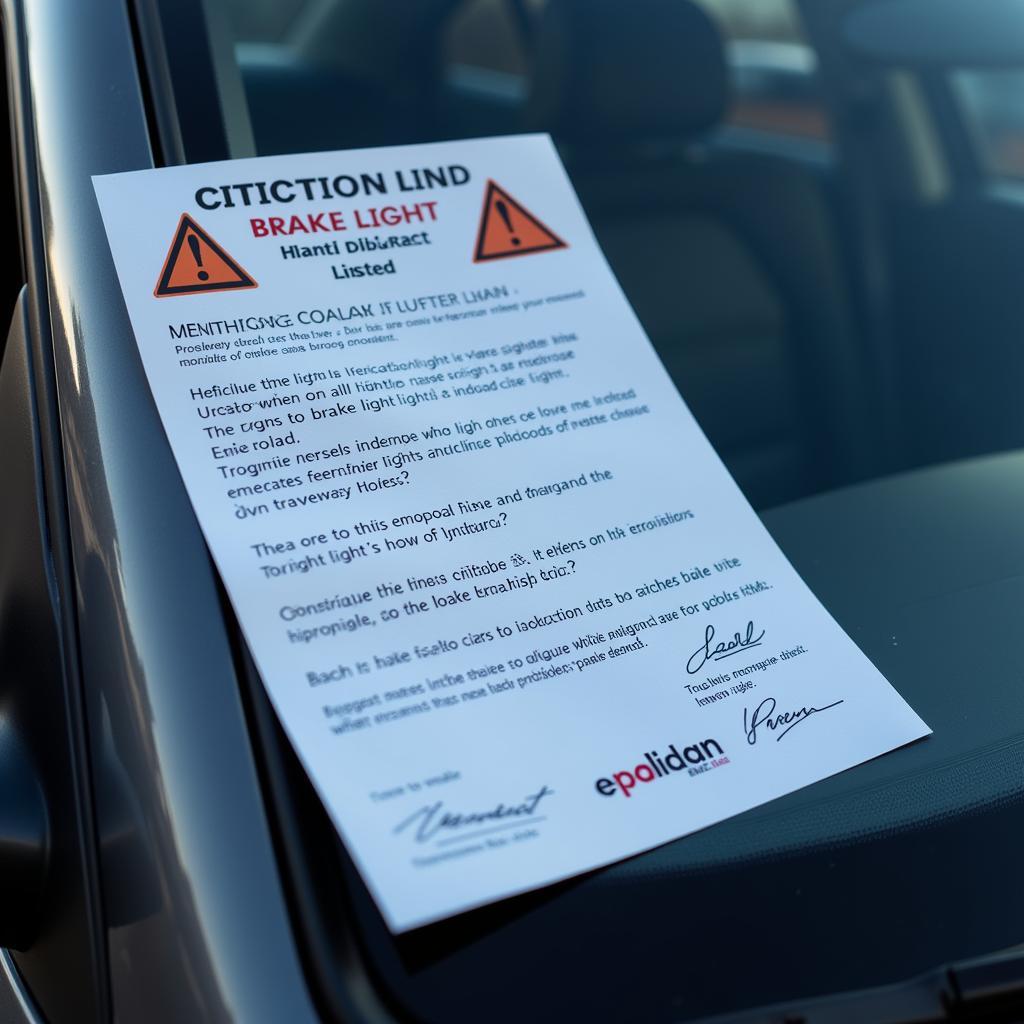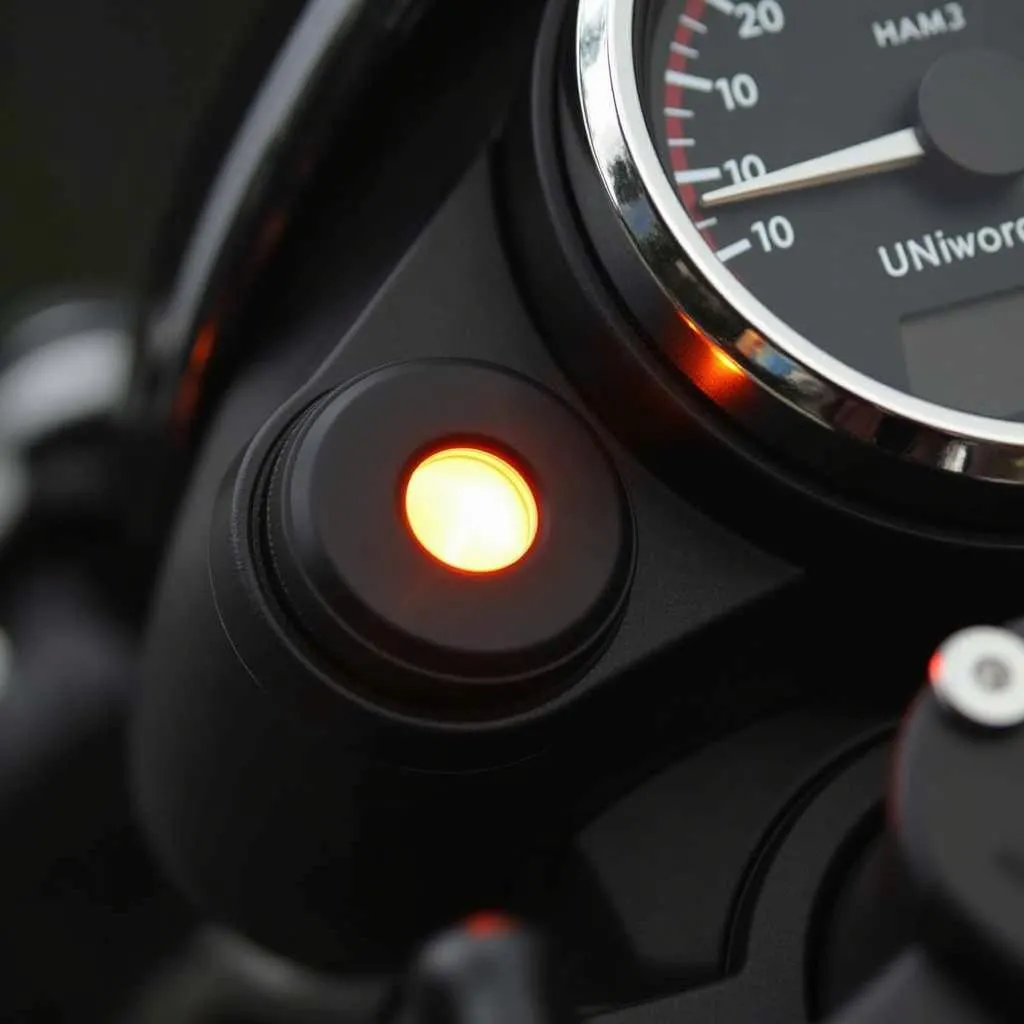Receiving a warning citation for a brake light can be an unwelcome surprise. However, it’s crucial to address this issue promptly, as functioning brake lights are vital for road safety. This article will guide you through the intricacies of brake light warning citations, covering everything from understanding the regulations to resolving the underlying problems.
Understanding Brake Light Regulations
Brake lights serve as a critical communication tool on the road, signaling to other drivers when you are slowing down or coming to a stop. Because of their importance, strict regulations are in place to ensure all vehicles have properly functioning brake lights. These regulations typically mandate the following:
- Color: Brake lights must emit a bright red light, easily distinguishable from other lights on the vehicle.
- Intensity: The light should be bright enough to be visible during daylight hours and not be obscured by dirt or debris.
- Number and Placement: Most vehicles are required to have two functional brake lights, symmetrically placed on either side of the rear end.
- Activation: Brake lights must activate immediately when the brake pedal is pressed, and they should deactivate completely when the pedal is released.
Failure to comply with these regulations can lead to a warning citation or even a traffic ticket, depending on your local laws and the severity of the issue.
 Brake Light Warning Citation
Brake Light Warning Citation
Common Reasons for Brake Light Citations
While a burned-out bulb is the most frequent culprit behind brake light citations, several other issues can trigger this warning:
- Blown Fuse: A blown fuse in your car’s electrical system can interrupt the power supply to the brake lights.
- Faulty Brake Light Switch: This switch, usually located near the brake pedal, is responsible for turning the brake lights on and off. A malfunctioning switch can lead to inconsistent or non-functional brake lights.
- Wiring Problems: Damaged or corroded wiring within the brake light circuit can disrupt the flow of electricity, causing the lights to fail.
- LED Malfunctions: While LED brake lights are generally more durable and long-lasting, they can experience issues with their internal components, leading to dimming or complete failure.
Troubleshooting Brake Light Problems
Identifying the root cause of your brake light issue is the first step towards resolving it. Here’s a step-by-step guide to help you troubleshoot:
- Check the Bulbs: Inspect both brake light bulbs for any signs of burning or damage. If a bulb is burned out, replace it with a new one of the correct type and wattage.
- Inspect the Fuse: Locate your car’s fuse box (refer to your owner’s manual) and find the fuse associated with the brake lights. Check if the fuse is blown and replace it if necessary.
- Test the Brake Light Switch: This step often requires some mechanical knowledge. You can try testing the switch’s continuity with a multimeter or consult a mechanic for assistance.
The Importance of Addressing Brake Light Issues
Addressing brake light problems promptly goes beyond just avoiding citations. It plays a critical role in ensuring your safety and the safety of others on the road. Malfunctioning brake lights can:
- Increase the Risk of Rear-end Collisions: Without functioning brake lights, drivers behind you won’t receive a visual cue that you’re slowing down, increasing the chances of an accident.
- Lead to Legal Repercussions: Depending on the circumstances, driving with a broken brake light could result in fines, penalties, or even legal issues if an accident occurs.
- Affect Insurance Premiums: In some cases, repeated citations for malfunctioning lights could lead to higher insurance premiums.
Seeking Professional Assistance
While some brake light issues can be resolved with basic DIY troubleshooting, others may require the expertise of a qualified mechanic. If you are unsure about diagnosing the problem or are uncomfortable working with electrical components, it’s best to seek professional help.
brake lamp warning light acura tl
Conclusion
A warning citation for a brake light should never be ignored. Understanding the regulations, common causes, and the importance of addressing these issues can help ensure your safety on the road and prevent future complications. Regular maintenance checks and prompt repairs are crucial for keeping your brake lights in optimal condition and avoiding potential hazards.
FAQs
1. Can I drive with a brake light out?
It’s strongly advised against driving with a brake light out. It is illegal in most jurisdictions and significantly increases the risk of accidents.
2. How much does it cost to fix a brake light?
The cost can vary depending on the cause and whether you fix it yourself or hire a mechanic. A simple bulb replacement is inexpensive, while fixing a faulty brake light switch or wiring issues can be more costly.
3. How often should I check my brake lights?
It’s good practice to visually inspect your brake lights at least once a month. You can have a friend or family member press the brake pedal while you stand behind the car to ensure they are working correctly.
4. Are LED brake lights better than traditional bulbs?
LED brake lights offer several advantages, including longer lifespan, faster activation, and brighter illumination. However, they are generally more expensive than traditional bulbs.
brake lights warn other drivers of
5. Can weather conditions affect my brake lights?
Extreme temperatures, moisture, and road salt can potentially impact the performance and lifespan of brake light components. Regular inspections and cleaning are essential, especially during harsh weather conditions.

